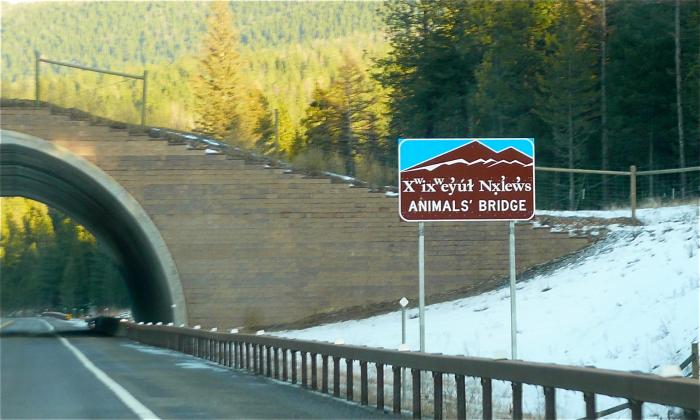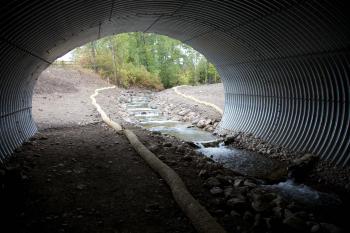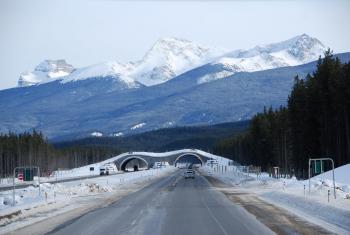
Animals need a way to cross busy roads. A wildlife crossing provides safe passage over or under a busy highway. It’s a way for animals to migrate and move freely, safe from traffic. It can give many animals access to what they need to survive. Wildlife crossings usually include trees or other natural resources to make them look like their normal habitat.
Wildlife crossings can be found all over the world and are constructed for many different animal species. There is an elephant underpass in Kenya and a crab bridge in Australia. In New Zealand there’s a pipeline for penguins, in Canada there’s a deer tunnel, and in Australia there’s a rope bridge for possums. The United States has many wildlife crossings including one for squirrels called the Nutty Barrows Bridge in Longview, Washington. In the Santa Monica mountains outside Los Angeles, a crossing is being built that will span ten highway lanes across US-101.
Have you seen a deer try to cross the street? This isn’t a natural activity for deer or other animals. Many animals get injured or die when trying to cross busy roads in their environment. Wildlife crossings are made to give animals an alternate way to get around man-made obstacles. This can reduce the number of accidents involving vehicles and animals by up to 90 percent.


- The first wildlife crossings were built in Europe in the 1950s.
- The Washington state government, working with the Confederated Salish and Kootenai Tribes, created dozens of animal crossings and miles of fencing to protect animals, plants, and waterways.
- There are more than one million collisions between vehicles and large animals every year.
- Building the crossings can be expensive, but the cost of car-animal crashes is even higher (up to $8 billion a year)
Make Way for Animals! by Meeg Pincus (J 333.954 PIN)
Wild World Handbook by Andrea Debbink (J 333.9516 DEB)
